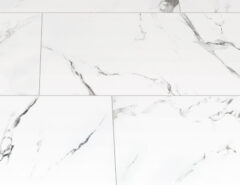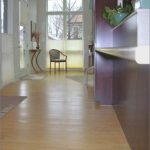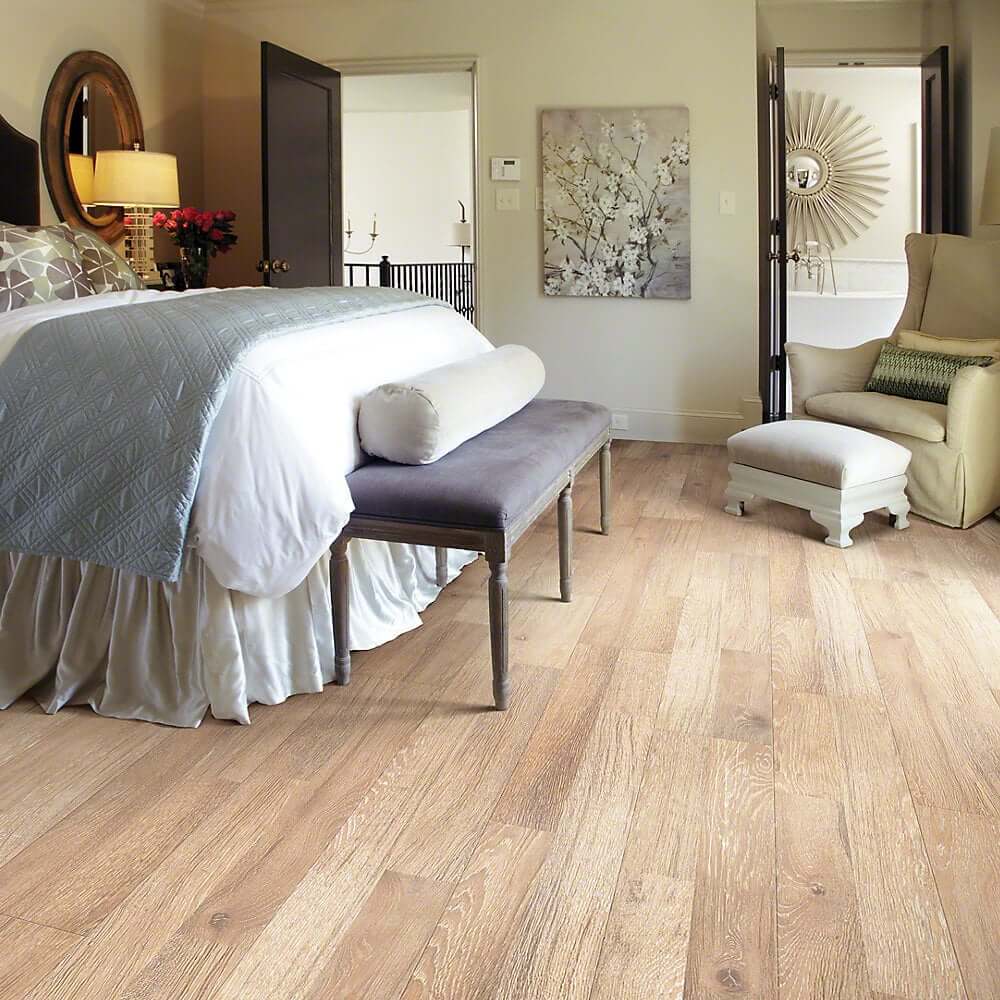What is a floating floor? Floating floors aren’t a type of material. They are any type of flooring installation where the floor material “floats” above the underlayment and subfloor.
Floating floors don’t require adhesives or nails. Instead, they usually lock right into place on top of the subfloor beneath them.
Floating floors have several advantages and work well in a variety of different spaces. They come in several materials, too. The cost and installation can vary based on the materials and type of floating floor you choose.
If you’re curious about floating floors, and you’re wondering if they’re right for your project – you’ve come to the right place. Let’s look at everything you need to know about floating floors:
4 Advantages of Floating Floors
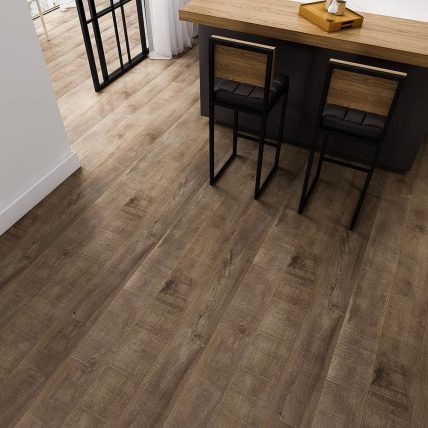
Let’s begin by looking at the four most significant advantages of floating floors:
1. Large Variety of Styles, Colors, Grains, and Textures
There’s no shortage of styles, colors, grains, and textures with floating floors. No matter what motif you’re hoping to achieve, you can get the look with floating floors.
2. Ability to Install Over a Variety of Subfloor Materials
Floating floors install on top of other floors. It’s what gives the flooring its name. Floating floors can “float” over a variety of subfloor materials, making it easy to get started.
3. Fast Installation
There’s no need to tear up the existing floors. You also don’t have to glue or nail down floating floors. Instead, you simply interlock floating floors on top of the subfloor for fast and easy installation.
4. Cost-Effective
Floating floors are generally incredibly cost-effective and much friendlier on a budget than other flooring alternatives, making them a top choice for the budget-conscious.
Which Spaces are Floating Floors Best For?
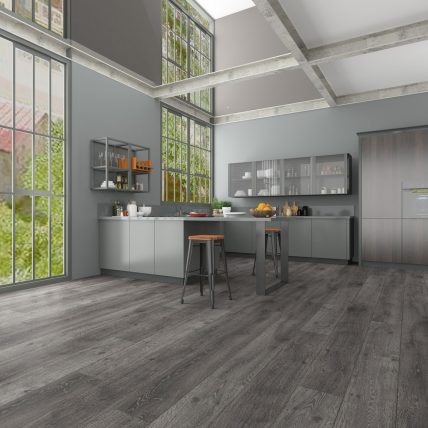
Now that you know a bit about floating floors and their advantages let’s look at the places floating floors work the best.
Kitchens
Floating floors are an excellent option for kitchens, thanks to their beauty and durability.
Floating tiles are great in areas that might be prone to some spills – like the kitchen. Just be sure to install a moisture-blocking underlayment.
If you’re using floating floors in your kitchen, be sure to install the flooring before you bring in the appliances.
Living Rooms
Floating floors are a great option for living rooms. Thanks to the variety of styles and colors, most people can find a floating floor style that fits their living room’s existing motif.
Dining Rooms
Floating floors are a terrific option for the dining room, with nearly unlimited color choices and easy installation. Plus, with an underlayment, they can withstand spills and moisture.
Basements
Floating floors are an excellent option for basements for many reasons. For one, floating floors can be installed right on top of the concrete. The installation is a breeze, and there’s no need for adhesives or messy tiles. If you use an underlayment, floating floors are fantastic for moist areas like the basement.
Costs of a Floating Floor
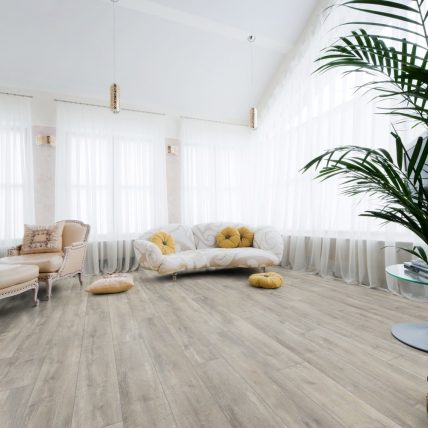
The cost of floating floors varies based on material and installation. However, the average price of floating floors ranges from $2 per square foot to $8 per square foot. If you hire a professional installer, you can expect to spend around $2,300 on the installation (for a three hundred square foot area).
Floating Floor Installation
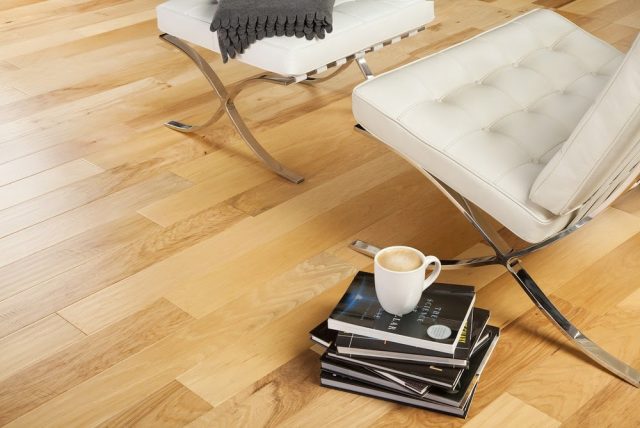
The actual installation will depend on your floating floor manufacturer. However, there are some basic steps for every floating floor installation.
First, start by clearing the space and floor to ensure the surface is as clean and smooth as possible. Then, lay an underlayment to make the flooring quieter and softer underfoot and to help with moisture. Then, assemble and lock the planks together.
During installation, it’s essential to leave a ¼ inch space between the wall and the floor to account for expansion. You might also have to cut the final pieces to make them fit into the space.
The Best Floating Floor Materials
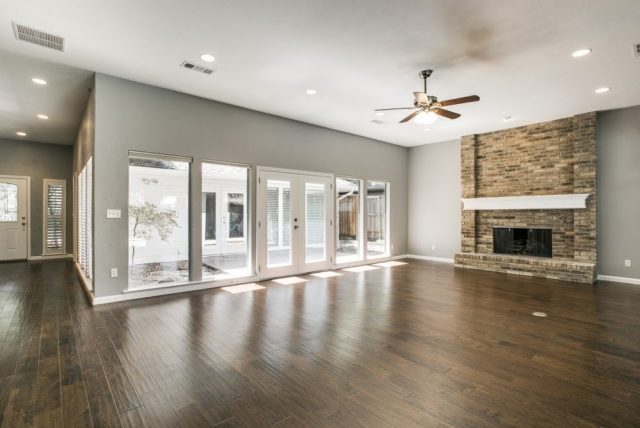
Laminate, vinyl, and engineered hardwood are the three best floating flooring material options. Let’s take a second to talk about each of them.
Laminate
Laminate flooring is a much-loved flooring material for DIYers everywhere, so it makes sense that it’s also a top choice for floating floors. Laminate flooring planks join together along their edges via a click-lock system.
Vinyl
Vinyl or LVT snaps together like laminate planks do. However, LVT also comes in glue-down varieties, so it’s important to make sure you have the type that locks together if you plan to use it as a floating floor.
Engineered Hardwood
Engineered floors are like laminate, since it’s a decorative surface glued over an MDF or plywood core. Generally, engineered hardwood floors are nailed to a plywood subfloor. However, there are brands that have the click-lock option for floating floors, too.
The Best Way to Buy Floating Floor Materials
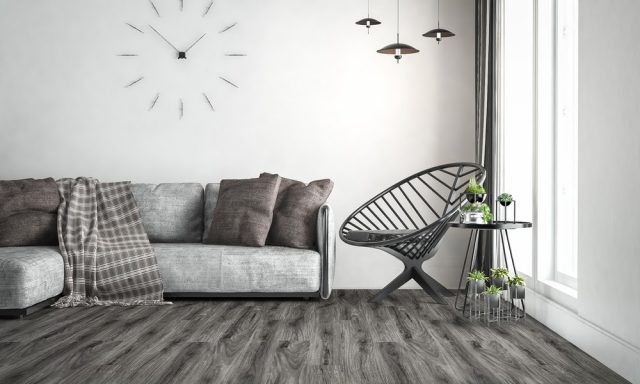
If you’re ready to move forward with a floating floor for your project, you want to make sure you have the best floating floor materials from the start. At BuildDirect, we have the best floating floor material options on the market.
Plus, if you become a PRO Rewards member, you get unlimited free samples. 5% credit, on-site delivery, 30-day money-back guarantees, exclusive deals, and more. Become a PRO now, and find the floating floor that fits your project goals.















